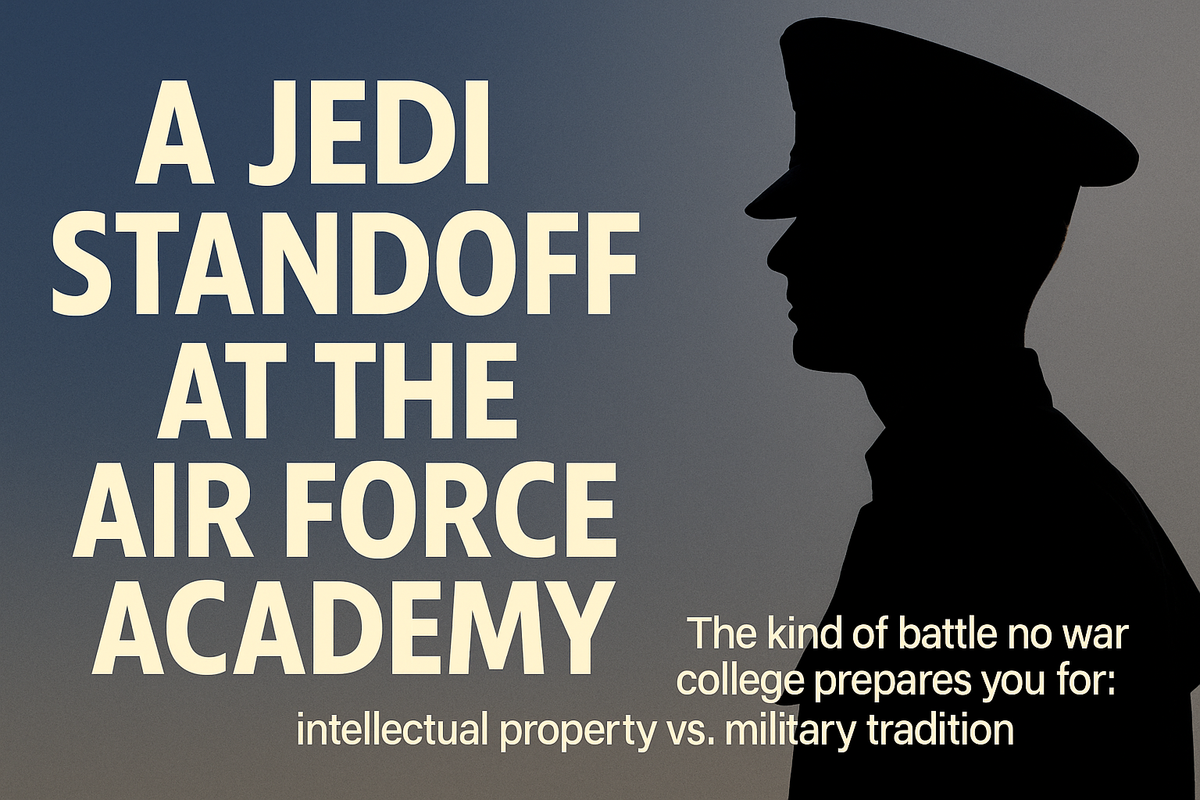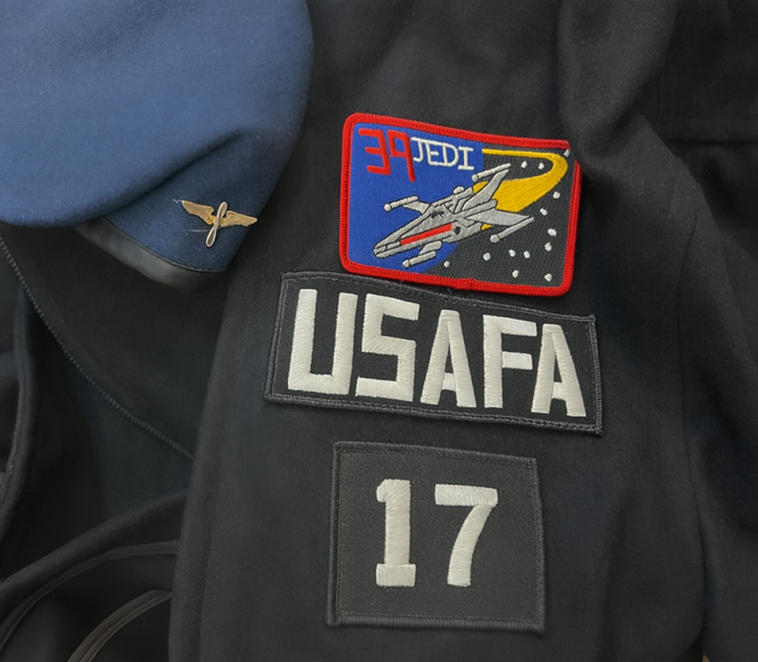The Jedi Standoff
When cadets in CS-39 proudly wore their “Jedi” squadron patch, they didn’t expect a skirmish with the galaxy’s biggest copyright enforcer. A true story of identity, tradition, and an unexpected legal showdown at the Air Force Academy.

USAFA, 2015
In the quiet hallway outside CS-39’s SAR (Squadron Activity Room) in Sijan Tower, a Cadet 1st Class leaned against the wall, arms crossed, his gaze lingering on the squadron’s mural — a fading tribute to decades of lore. Beside him, a Cadet 2nd Class adjusted the patch on his ABUs, the Jedi Knight insignia stitched proudly into the sleeve. They didn’t speak, but the tension was clear. A storm was coming — not from the command chain, but from Burbank. The kind of battle no war college prepares you for: intellectual property vs. military tradition.
The name “Jedi Knights” wasn’t just a fun nickname. Since 1981, it had been their identity. Etched into wall murals and plaques, stitched into morale patches, and woven into chants and lore passed down from class to class. Early on, CS-39 had even received written authorization from George Lucas himself—an informal but powerful gesture allowing the squadron to use the Jedi name and X-Wing imagery. That letter remained in the squadron’s possession for years, a quiet shield against doubt. The identity wasn’t just tradition; it had legacy.

But now, the name was under threat.
A message had quietly filtered through the Academy’s legal channels: Disney had taken notice. The acquisition of Lucasfilm was still fresh, and the corporation was tightening its grip on the Star Wars intellectual property. A photo of the squadron patch—featuring a bold X-Wing and the “Jedi Knights” name—had reached the wrong desk. Lawyers wanted it gone.
For the squadron, it felt surreal. They weren’t selling anything. This was tradition, not commerce. Yet the possibility loomed: abandon the name, scrap the patch, erase the legacy—or face legal escalation.
Then came the twist: a personal connection, unlikely and unseen, that would change everything.
One of the cadets in CS-39 had attended a private school in California—a small, academically rigorous institution known for its creative culture and well-connected families. Among the students was someone from the Disney family—a direct descendant of Walt Disney himself. The two had shared classrooms and projects, and more importantly, their families had stayed in touch.
When word of the legal threat reached the cadet’s family, a quiet call was made. A mother reached out to another mother. The conversation wasn’t about trademarks—it was about heritage. A squadron tradition. A symbol of honor and service. A little piece of military culture unintentionally caught in the gears of corporate oversight.
Somewhere deep inside the House of Mouse, the message landed. Maybe it was forwarded. Maybe it found sympathetic ears. Maybe it was just allowed to fade quietly. No formal statement came. But just as quickly as the threat had emerged, it vanished.
There were no takedowns. No rebranding. No name change.
The ABU-clad cadets of Squadron 39 kept flying under the Jedi banner. The patch remained sewn.
And to this day, etched into the murals of Sijan Tower and stitched into the fabric of Air Force Academy tradition, Cadet Squadron 39 remains the Jedi Knights.
